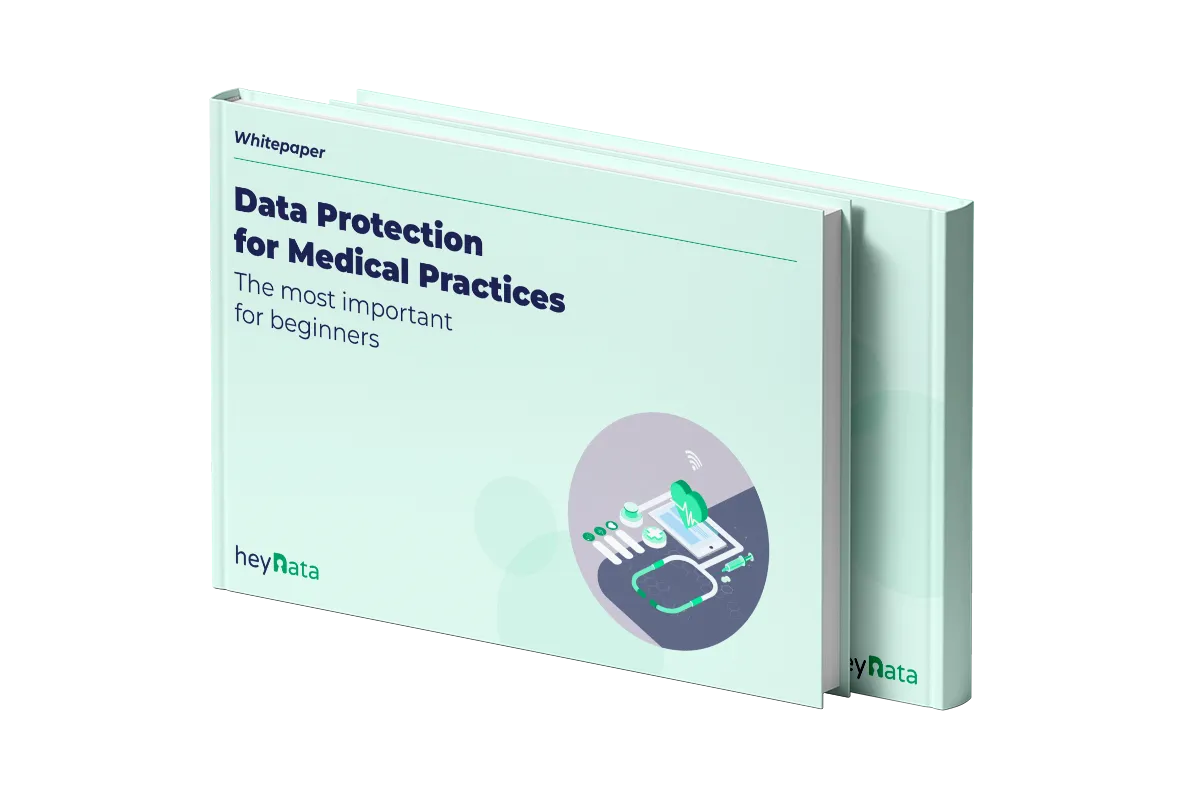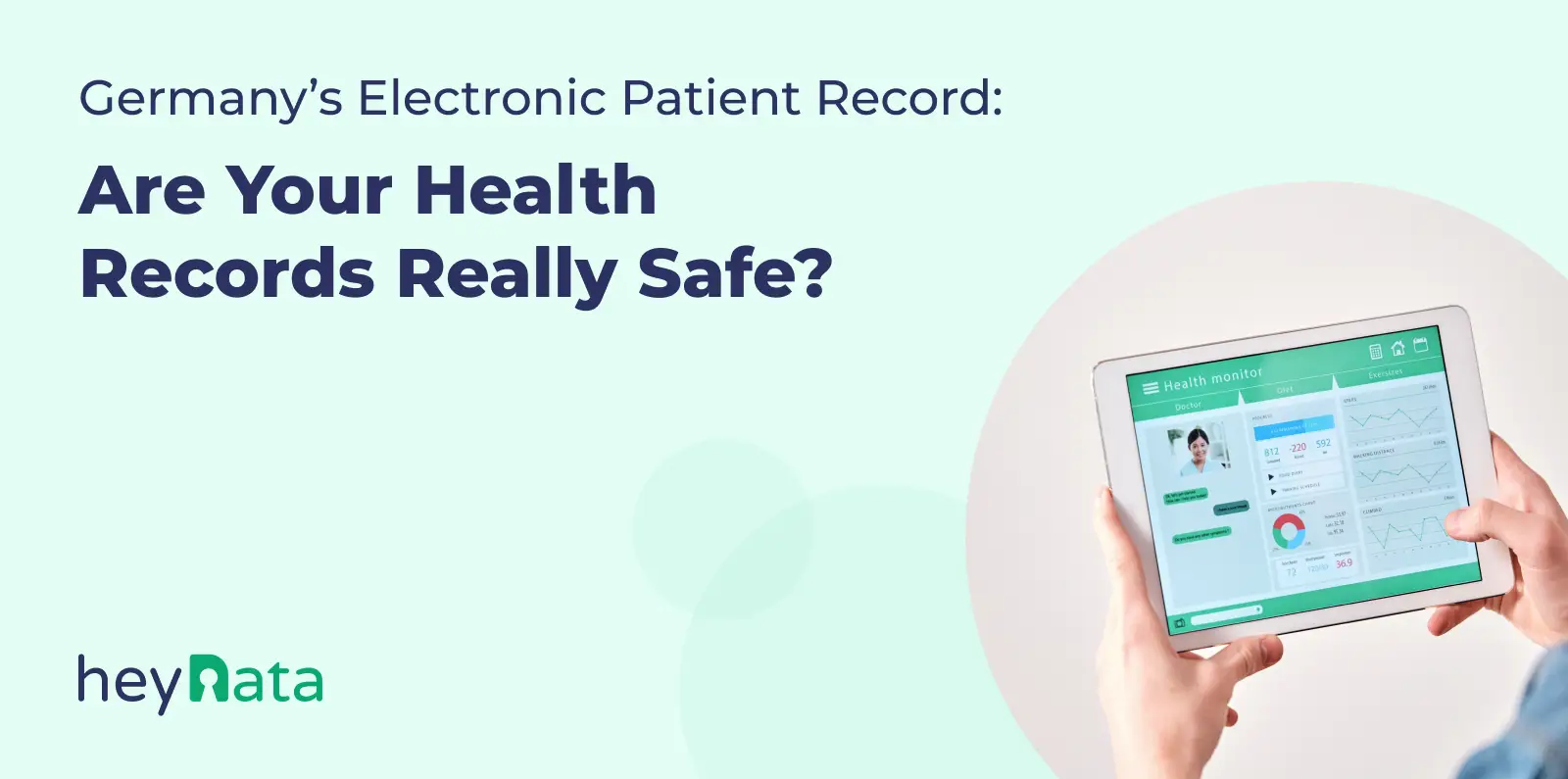
Data Protection with headaches!
Essential GDPR rules for medical practices – clear & concise.

Germany's Electronic Patient Record: Are Your Health Records Really Safe?

The digitalization of healthcare in Germany has taken a significant leap with the introduction of the Electronic Patient Record (ePA). Designed to streamline patient data management and improve medical care, the ePA offers healthcare providers and patients centralized access to medical history, prescriptions, and treatment records. However, as with any large-scale digital initiative, concerns surrounding data protection, security, and compliance with regulations like the General Data Protection Regulation (GDPR) have emerged.
In this article, we explore what the ePA is, how it was launched, the concerns raised by the medical community, and the broader implications for data security in healthcare.
Table of Contents:
Understanding the Electronic Patient Record (ePA)
The Electronic Patient Record (ePA) is a centralized digital repository designed to store and manage patients' medical information.
Its primary goal is to facilitate the seamless exchange of data among doctors, hospitals, and insurance providers, ensuring efficient and transparent healthcare services. Patients have control over their records, theoretically allowing them to determine who can access their data.
ePA includes these key features:
- Digital storage of medical history, prescriptions, and doctor’s notes
- Access management by patients
- Interoperability between healthcare providers
- Secure cloud-based infrastructure
Launch and Public Reception
The timeline of the Electronic Patient Record (ePA) rollout in Germany involves multiple phases of implementation:
- The ePA was initially launched in January 2021 as an opt-in system, meaning patients had to actively sign up to use it. Adoption remained low despite efforts to promote it.
- To accelerate its implementation, Germany’s Digital Care Act mandated health insurance providers to offer ePA access to all policyholders by 2024. However, participation was still voluntary.
- A major shift occurred on January 15, 2025, when the EPA became an opt-out system, meaning all 73 million statutory health insurance holders were automatically enrolled unless they explicitly refused. While this aims to increase adoption, it has raised concerns about whether it fully aligns with GDPR’s requirements for informed and explicit consent.
- This move was intended to drive widespread adoption but has also raised serious privacy and security concerns from both the public and the medical community
According to a survey by eco - Association of the Internet Industry, 65% of Germans feel poorly informed about the ePA, while 61% of respondents consider security and protection of personal data to be the main criteria for using the system.
Many patients are unaware of how their data is stored, who has access to it, and how securely it is being managed. The lack of awareness creates distrust and hinders adoption rates, despite the government's push for digitalization in healthcare.
Medical Community’s Concerns
Physicians and medical professionals have raised red flags about the potential data security risks associated with the ePA.
According to a report by Ärzteblatt, doctors have expressed concerns that the ePA might compromise medical confidentiality due to vulnerabilities in access management. If access controls are weak, sensitive patient data could fall into the wrong hands, raising significant privacy concerns.
At the end of November, the Professional Association of Pediatricians and Adolescent Doctors (BVKJ) raised concerns with the Federal Ministry of Health and other authorities about the ePA’s failure to adequately protect the data rights of children and young people. A key concern is the lack of a clear mechanism to revoke access from previously authorized individuals, leaving sensitive data vulnerable.
Despite these warnings, no significant corrective actions have been publicly announced. However, discussions on potential security improvements and regulatory responses are ongoing. Until a secure solution is implemented, the BVKJ advises parents to opt out of the ePA.
Additionally, centralized health records are an attractive target for hackers, increasing the risk of ransomware attacks and data breaches. The potential consequences of such breaches are alarming, with not only the privacy of patients at stake but also the possibility of manipulation or misuse of their medical records.
Lastly, from an ethical standpoint, some doctors worry that storing all patient data digitally could lead to pressure from insurance companies or other stakeholders to access or evaluate sensitive health information beyond what is necessary for treatment.
Despite these concerns, the government has emphasized the potential benefits of the ePA, such as improved coordination of care and reduced healthcare costs. However, without addressing the privacy and security issues, it will be challenging to gain widespread trust and adoption among both patients and healthcare professionals.

Data Protection with headaches!
Essential GDPR rules for medical practices – clear & concise.
Chaos Computer Club Exposes Critical Security Flaws in the ePA
Security researchers from the Chaos Computer Club (CCC) have demonstrated how unauthorized access to ePA data was possible due to flaws in the issuance of health professional and practice ID cards. While these vulnerabilities were identified, there is no public confirmation of large-scale exploitation of these flaws.
Their analysis revealed that it was too easy to obtain valid authentication credentials due to weaknesses in application portals and verification processes.
Even more alarming, CCC researchers found that deficiencies in system specifications allowed attackers to generate access tokens for any insured individual’s ePA without needing to physically present or scan their health card. While this vulnerability was identified, no evidence of widespread exploitation has been reported. This means that professional attackers could potentially exploit these vulnerabilities to access confidential health records without proper authorization.
Michael Hubmann, President of the BVKJ (German Association of Pediatricians), criticized the handling of these security gaps, stating:
"It is frustrating how those responsible are trying to downplay a data gap that is easy for professional attackers to overcome and create the impression that the ePA would ensure data security in Germany."
These findings cast serious doubt on the ePA’s security framework, reinforcing concerns from doctors and privacy advocates that the system is not yet strong enough to protect sensitive medical information from unauthorized access.
Security and Data Protection Challenges
From a data protection perspective, the ePA raises several GDPR compliance concerns:
- Data Minimization and Purpose Limitation - GDPR mandates that data collection should be limited to what is strictly necessary. Storing excessive medical information in a centralized system increases the risk of misuse and breaches.
- Vendor Risk Management - The ePA relies on external technology providers for infrastructure and cloud storage, introducing concerns over whether these vendors maintain high-security standards and comply with GDPR. In a recent case, major healthcare providers have suffered breaches due to security lapses in cloud-based systems, further highlighting the need for stringent vendor risk management. For example, in the Fresenius ransomware attack, hackers exploited vulnerabilities in a healthcare IT system, underscoring the risks associated with third-party infrastructure.
- Consent Management - GDPR requires explicit, informed consent from individuals for processing their data. Critics argue that the ePA’s consent mechanisms are unclear, making it difficult for patients to fully control their information. This was particularly evident when approximately 73 million statutory health insurance policyholders were automatically enrolled in the ePA system without their explicit consent, raising significant legal and ethical concerns about compliance with GDPR's consent requirements.
- Breach Notification and Accountability - If a data breach occurs, the responsible entity must notify authorities within 72 hours. However, the complexity of multiple stakeholders in the ePA system makes accountability difficult to determine. This lack of clarity and accountability can lead to delays in breach detection and notification, leaving patients vulnerable to potential harm.
These challenges highlight the urgent need for stricter security protocols, clearer regulatory oversight, and robust technical safeguards to ensure the ePA meets the highest standards of data protection and patient privacy.
Conclusion
The Electronic Patient Record (ePA) represents a significant step forward in digital healthcare, but its implementation raises serious data protection concerns.
As the healthcare industry moves towards greater digitalization, proactive compliance measures will be key to protecting sensitive patient data.
If you want to make compliance simple and stress-free, contact us to learn more about our all-in-one compliance solution.
Important: The content of this article is for informational purposes only and does not constitute legal advice. The information provided here is no substitute for personalized legal advice from a data protection officer or an attorney. We do not guarantee that the information provided is up to date, complete, or accurate. Any actions taken on the basis of the information contained in this article are at your own risk. We recommend that you always consult a data protection officer or an attorney with any legal questions or problems.


